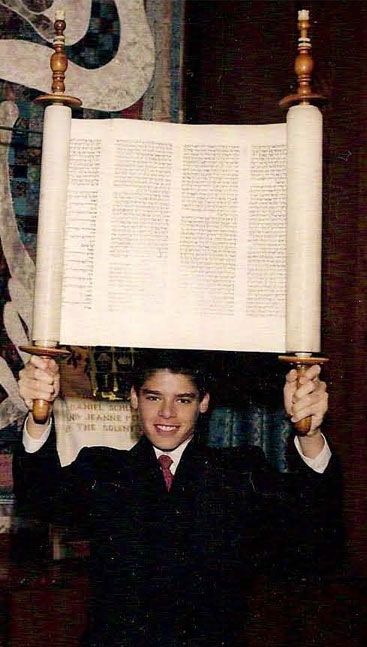
from Anzio Beach Landing to Dachau Liberation
– and the Saving of Holocaust Torah Scrolls
This story begins in the late winter of 1942. The world was aflame with the rampages of Hitler’s Germany. The U.S. was desperately trying to catch up with Hitler who had been in preparation for world conquest for years.
Nathan Crandall (1914 – July 4, 2000)
Nat Crandall was born, raised and educated in Windsor, Canada through the equivalent of one year of college. His parents were orthodox Jews from Eastern Europe and the family language was Yiddish which was important because it was to play a part in the war when he became an unofficial interpreter since Yiddish is so close to German.
Crandall recalls: “My wife, Ruth, and I had been married for several years, both working. Like many of our friends, we were making a start from scratch. I had recently taken the plunge to open my own business with a partner, producing fabric sample display cards being used in the textile industry. Fabrics, when available, were sold from a labeled swatch. Due to the shortages created by the war, these types of sales aids were no longer necessary. As a result, we closed down with a complete loss of investment.”
Nat was fortunate to get a job with a coat and suit manufacturer owned by a friend’s father. He was the supervisor and coordinator of the cutting room, assigning the sewing work to various sub-contractors. He was put in charge of purchasing supplies such as buttons, linings, belts, zippers, and other accessories.
Inducted into the U.S. Army, 1943
Crandall was inducted into the Army in February 1943, and landed in Camp Wheeler in Macon, Georgia as an infantry trainee. His first child (Rick) was on the way, but had not yet been born. Crandall was shipped out from Newport News, Virginia, and spent 21 days in a convoy of Liberty ships.
He recalls: “I don’t know how my wife made out during those years. My salary was $60 or $65 per month and I sent it to Ruth and only held out $3 or $4 per month. I didn’t smoke. She did amazingly well with that little money.”
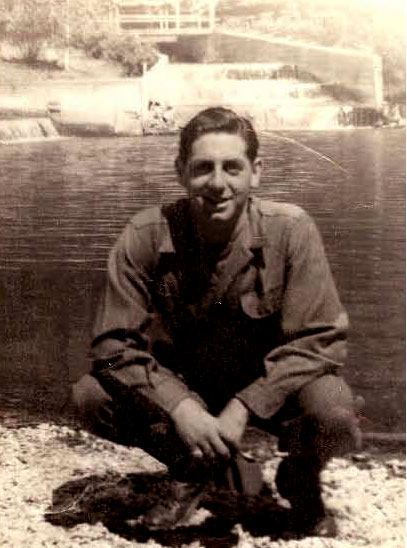
There were 600 troops packed in each ship – sleeping in hammocks in three 8-hour shifts. The rest of the time was spent eating and doing nothing. It was 20 long days on the convoy to go across the ocean from Virginia to Oran, North Africa on the Mediterranean.
Nat recalls: “we were all puzzled – why did we have to bring mattress covers with us, two apiece. Well, we later learned that they were used for body bags. They just used us as couriers and they all went to some central place for subsequent use.”
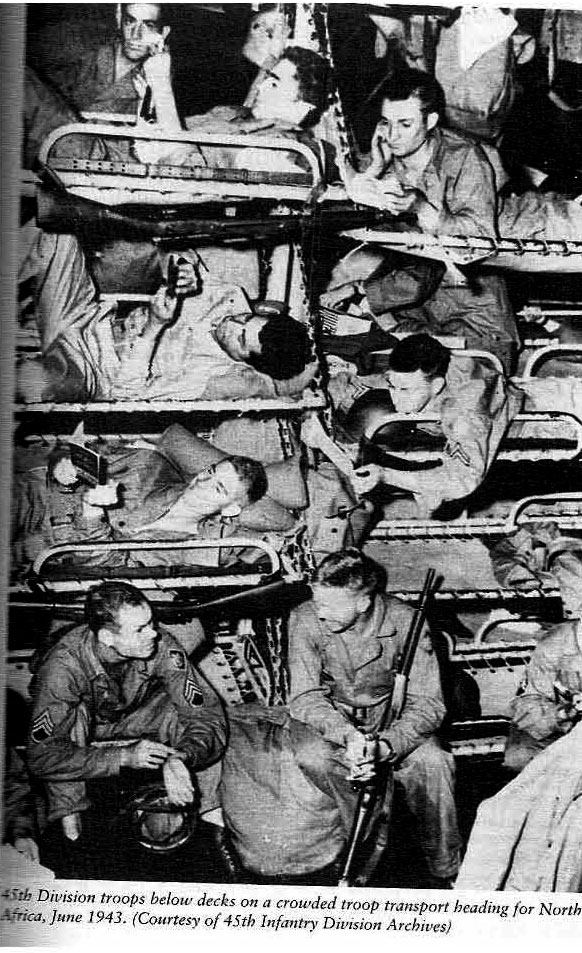
Beach Landing at Anzio
After arriving and sitting idle for 3-4 days in Oran, Crandall was shipped out to Anzio on Day + 2, i.e. two days after American troops began the assault on Anzio’s beachhead on January 12, 1944. The landing was done with LST’s (Landing Ship Tank).
The LST had a flat open deck and a super-structure for crew and controls on one side. “My friend, Ernie Friedman and I were positioned in the shade of the superstructure watching huge geysers of water shoot skyward. We didn’t yet realize that we were being shelled by what later became famously known as the Anzio Express – a very large-caliber cannon mounted on a rail flat car that receded into a tunnel in the mountain when attacked by the Allied Air Force. The explosions were enormous.”
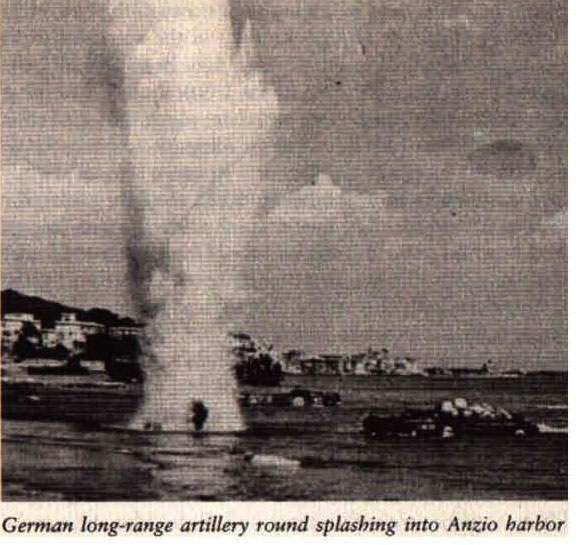
The LST made it to the beach, and two huge front doors swung open allowing the various vehicles to roll out under their own power. Those, including Crandall, who survived the landing, scrambled into the town of Anzio where they were provided shelter by friendly Italians.
“I got down the ladder from the LST and went into town right under the German fire. We were all green as a cucumber. We were all pinned down by German fire. Anzio had a very flat beachhead. You’d walk for 1 ½ hours on the flat until you’d start to see the rise to the hills. So we were wide open. The British soldiers who were right next to us, had to have their tea at 4pm every afternoon. The Germans knew that, so at 4pm every day the German Spitfires came around to lambaste us. There was no place to hide.”
“The Germans did cause damage, but it was even more psychologically damaging. When the German tanks came up, the British went up in their Spitfires and did pretty good damage to the Germans, but we were running around, just trying to find a safe place. It put the fear of survival in you and you formed a team.”
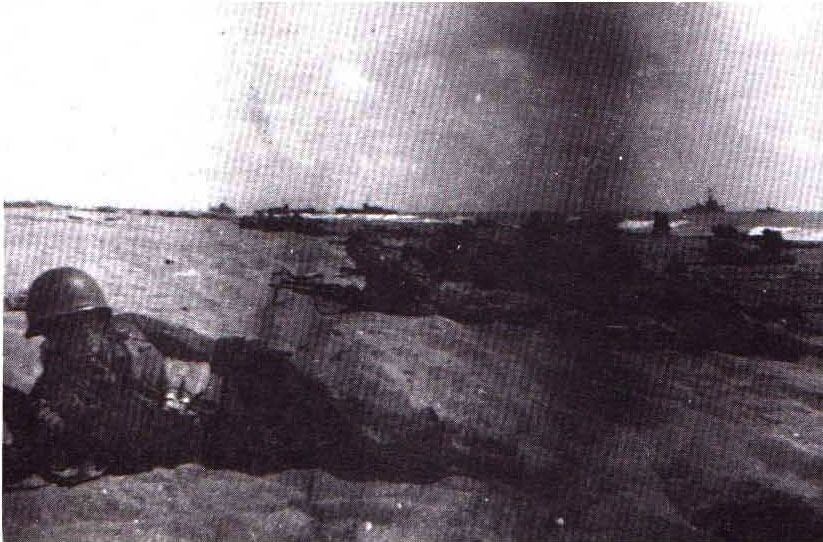
The beachhead at Anzio: the third amphibious landing for the Thunderbirds. In the first landing on Day 1 there was little opposition due to surprise, but when German Field Marshall Kesselring encircled the beachhead, the ground was paid for in blood.
Crandall was part of a group assigned to Company A, 180th Infantry Regiment.
“We were led to the front and we were introduced to the Platoon leader, Lt. Siegel from the Bronx. He was friendly and chatted with each one of the replacements, asking semi-personal questions about our backgrounds and education. A real nice guy.
When it came to my turn, he asked me the same sort of questions, in particular, if I had participated in any sports in school. Since I had not yet learned that in the Army you keep your mouth shut, like a schmuck, I went through my sports career in football, basketball, swimming, and tennis. The Lt. was impressed and said, ‘Good, I’ve got just the thing for you. That’s yours now!’
He was pointing to a BAR (Browning Automatic Repeater) gun, which was a portable automatic firing weapon that fires from clips containing twenty 30-caliber bullets. It’s the next step up from the M1 rifle, more like a light machine gun.
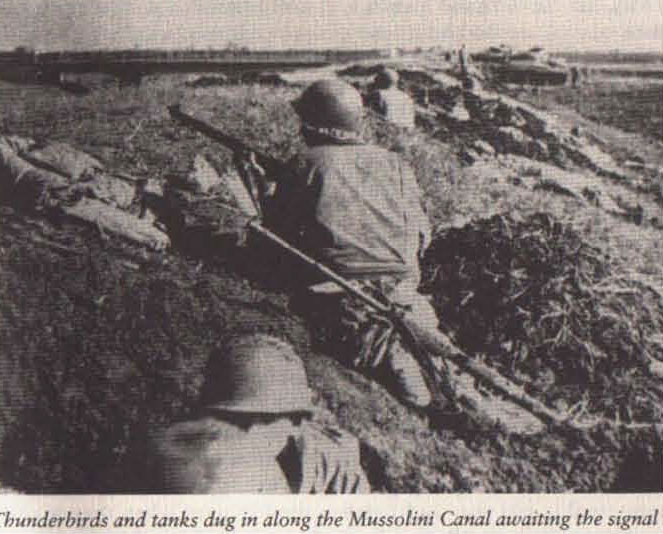
“With the weight of the gun, about 50 lbs., two bandoliers of clips, my pack, gas mask, when on the move, I felt my ass was dragging on the ground and I was sure I would develop blisters any minute.”
At night they started the march up to the front in the foothills of Anzio.
“So there we were in Anzio, and at a certain time at night the bombardment started, and it was vicious. The Germans hadn’t weakened in any way. They were well supplied and they had driven well into Italy. They had a modus operandi to demoralize us. They did a pretty good job of it. We each would send patrols out to case each other every night. The land between us was a real no-mans land. It was booby-trapped and was just a mess. We were bombarding each other, but they had the protection of the hills and we had no protection.”
Analysis from: www.45thDivision.org/campaignbattles/anzio.htm During the four months of the Anzio Campaign the Allied Corps suffered over 29,200 combat casualties (4,400 killed, 18,000 wounded, 6,800 prisoners or missing) and 37,000 noncombat casualties. Two-thirds of these losses were inflicted between the initial landings and the end of the German counteroffensive on 4 March. Of the combat casualties, 16,200 were Americans (2,800 killed, 11,000 wounded, 2,400 prisoners or missing) as were 26,000 of the Allied noncombat casualties. German combat losses, suffered wholly by its Fourteenth Army, were estimated at 27,500—figures very similar to Allied losses.
The Anzio Campaign was controversial. The operation failed in its objectives of outflanking the Gustav Line, and speeding the capture of Rome. Allied forces were quickly pinned down and contained within a small beachhead, and they were effectively rendered incapable of conducting any sort of major offensive action for four months pending the advance of Fifth Army forces to the south. As General Lucas repeatedly stated before the landing, the paltry allotments of men and supplies were not commensurate with the high goals sought by British planners. He steadfastly maintained that under the circumstances the small Anzio force accomplished all that could have been realistically expected. Lucas’ critics charge, however, that a more aggressive and imaginative commander, such as a Patton or Truscott, could have obtained the desired goals by an immediate, bold offensive from the beachhead. Lucas was overly cautious, spent valuable time digging in, and allowed the Germans to prepare countermeasures to ensure that it became a long, costly campaign of attrition.
Yet the campaign did accomplish several goals. The presence of a significant Allied force behind the German main line of resistance, uncomfortably close to Rome, represented a constant threat. The Germans could not ignore Anzio and were forced into a response, thereby surrendering the initiative in Italy to the Allies. The 135,000 troops of the German Fourteenth Army surrounding Anzio could not be moved elsewhere, nor could they be used to make the already formidable Gustav Line virtually impregnable. The Anzio beachhead thus guaranteed that the already steady drain of scarce German troop reserves, equipment, and materiel would continue unabated, ultimately enabling the 15th Army Group to break through in the south. But the success was costly.
Wounded by Shrapnel
“We must have been in Anzio for a few weeks. It was a hellhole of death. We couldn’t break out. Every American soldier carried a dog tag that had your number and your religion. Mine was stamped Hebrew, so I never wore my dog tag around my neck. I always had it in my back pocket so if I was captured I’d just throw it away because I wouldn’t want them to know I was a Jew.”
“We broke out to Cape xxx (?), because we had the Third Division. … well there was another very interesting point towards the east coast of Italy called Casino Pass that the Third Division was trying to take, and we were marching to Rome. It was at Capa Leone where I was wounded with shrapnel – and that was an experience. The Germans had tanks all around and they were launching shells everywhere.”
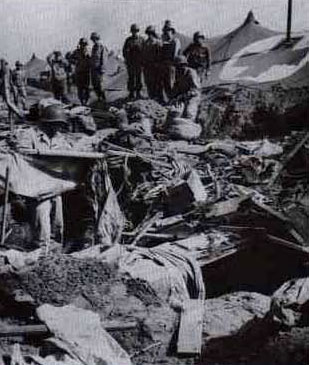
Evacuation Hospital at Anzio was within Artillery range and also subject to serial Attack.
“We had tanks too, and bazooka shells were flying in both directions. A piece of bazooka shrapnel the size of my thumb hit me in the leg and the force of that impact knocked me to the ground and I threw up and was in a state of shock. I had to get back to the medical station, but a lot of other guys were wounded too, so there was no help. I began to crawl towards the first-aid station. I dragged my rifle with me, because you’re not allowed to be without a gun. As I crawled along, I could see the extent of the bombardment. There were a lot of German dead bodies all around and you had little protection. You kept worrying that maybe one of these guys laying around was still alive and just playing dead, so that’s why you needed the gun.”
“I don’t know how long I crawled because I was in a bad mental state, but I made it back to the first-aid station. They put me on a stretcher and immobilized me.
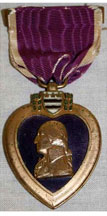
Purple Heart
The shrapnel had lodged up against my sciatic nerve. And it would hurt me if I moved around. They put me on this two-motor plane to get me out. They got me to Naples and shipped me to a hospital, which was a converted convent. They took a look at me, looked at my records and proceeded to cut my pants away; they gave me a spinal and cut out the shrapnel. This was happening while the Germans were bombing Naples and I was trying to move but I was still numb from the waist down from the spinal, so it was very frustrating and terrifying.”
Historic Thunderbird Division
Crandall was assigned to Company A, 1st Battalion, 180th Infantry Regiment of the 45th (Thunderbird) Division. A Company had 4 platoons of 36 men each. Three were fighting platoons and the 4th was a weapons platoon that included automatic weapons and mortars. Usually one platoon stayed back behind the weapons platoon, so they were a backup if the forward platoons were breached. The same method was used with Battalions, one would be held back. The same was done with an entire Company.
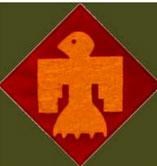
Thunderbird Arm Patch
The Thunderbird Division was historic – landed at Anzio, followed Patton across France and Germany and was part of the liberation of Dachau. On January 12, 1944 the Thunderbirds together with the U.S. Third Division joined with a British artillery unit that landed on Anzio with us. Besides being shelled by the Anzio Express, there were constant attacks day and night by the German Air Force. There was no shelter on the beachhead other than foxholes excavated by the troops.
Landing in Southern France
“Next we made the landing in Southern France; we landed on the Riviera in Southern France in an amphibious landing up the Rhone River valley and marched up into Germany. This was about March of 1944. The French part was not that difficult. There was some resistance because the Germans usually had the high ground and we had the low ground.”
“The First Sergeant of the Company, the administrator, was caught in the accidental crush of a tank and was incapacitated, and I was appointed as an acting First Sergeant, so I took on his additional responsibilities – if we were to be sheltered at any time, I needed to hunt up and allocate where each platoon and squad was to stay and to make sure that there was availability of hot food to the troops.
“At the same time as I was acting as First Sergeant, I was also the radio man. When we were spread out in combat arrangement, I handled all the inter-squad communications with a device like a walkie talkie. Then we had another kind of more long distance communication back to the battalion with a more heavy duty radio you carried on your back. I handled that too.”
“So we marched through France. The fighting wasn’t too fierce, but there were a number of instances where we made contact with the enemy. There was a lot of gunfire. The Germans seemed to pull back a bit – they weren’t so aggressive in France, but when we got to German soil in the Black Forest, that got really rough.”
Following Behind Patton
In France in December of 1944 Patton was pulled out of his march across Europe to rescue Bastogne; the allies did not want Bastogne to fall. The speed of his march to get to Bastogne was an incredible record. This was part of perhaps the most famous battle of the war – the Battle of the Bulge which was the single largest and bloodiest battle that the American forces experienced in World War II.
“Patton took Bastogne in about 6 days, faster than anyone could believe. We followed him and mopped up.”
Crossing the Siegfried Line
Crossing the border from France to Germany was a cold experience. There was snow in the mountains; “it was the dead of winter. We were trying to pierce the Siegfried line. There were two lines in Europe, the French had one called the Maginot line and the Germans had one called the Siegfried line. These were a system of pillboxes heavily reinforced with fields of fire that crossed over them so that if you got through the first line of fire, you got hit by the second line of fire.”
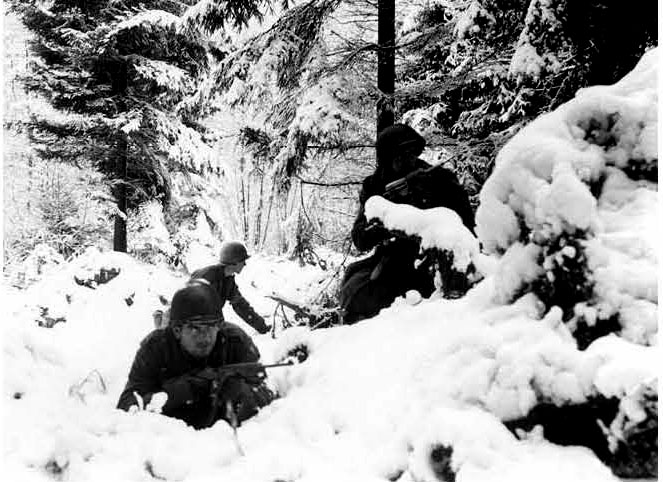
“We tried to crack the Siegfried line but couldn’t do it at first. We were told to retreat back – crossing a road and going up a slope. My leg had not completely healed. I was running along the road and they opened up on us and as I ran I kept coming down hard on my leg and it gave way. I fell and rolled over the embankment. As I did, I could see the tracer bullets flying overhead where I had been a second before. Lucky – I was in the right place at the right time.”
Cross-fire, Mine Fields and a Bronze Star
“We attempted to cross the Rhine River (part of the famous Rhineland Campaign designed by Eisenhower and executed by Generals Patch and Patton; many heroic accounts of American infantry came from that campaign that finally broke the back of German resistance) which was a natural barrier for the Germans, but it was our objective to cross over. We were parked on the western bank awaiting instructions from the top, and I get a telegram that my wife had been operated on. She had a hernia from carrying Rick. I went to the company commander and asked if I could go home, she’s alone. He said no, under the circumstances there’s no chance. That night the bombardment started from our side and we were both shelling like crazy. It was a fireworks show.”
“We were put on small landing craft to cross the river, and as the Germans saw us coming they began to use their artillery and mortars on us. You could see us from the illumination of the shell-fire above. We did not do well on that landing. We knew that the banks on the Eastern side had been mined heavily – booby-trapped. We were a crowd of 30 men with no space at all – they were still shelling us – we had an assembly point to meet with the rest of the Company, but all we had was a compass and surrounded by river and minefield. Everyone was worried about the minefield and was frozen about whether to step on something or not to step on something. In our training we had been indoctrinated about the way to go through a mine field and there are textbook operators who will only do things the text book way. One of the reasons the Americans turned out better than the Germans is because the Americans always made the best of a situation and you had to adjust to the situation.”
“The Germans could not adjust, they had to do it just the way you were supposed to. We were told that the Germans would start their barrage in a manner that would first attack the advance portions of their attackers and then they would lift the barrage to attack whoever was coming in to support the front lines. This seemed OK but they would start well forward of the group coming after them. This was taught not only to us officers but to all the troops – the American army wanted all troops to be trained in what to do in all situations. Sometimes under fire people would get frozen and that’s what I was confronted with.”
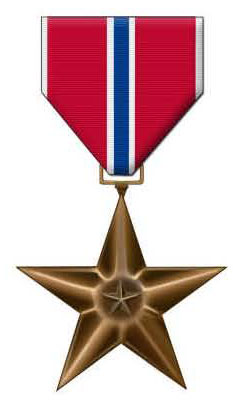
“There were two shells that had exploded very close to each other creating shell holes. We had six guys in one shell hole and seven in another shell hole almost next to it. The German fire was coming at us all the time. I saw what was happening – from time to time there was illumination from the bursting of the shells. So I said ‘OK, we have to make it to the assembly point – that’s what we want to do. I want you guys to follow me and let’s get through this.’ So I had the voice of the authority. I said: ‘line up, keep your six paces, follow me and let’s go.’
This wasn’t done in any way or shape of bravery even though I was awarded the bronze star for it – I was just carrying out what I’d been taught. I can’t go back I said to myself, I must go forward. No matter what, I have to push forward.”
“I said: ‘you guys follow me,’ and I got a hold of one guy I had recognized and I said: ‘you bring up the rear and make sure nobody stays,’ and I just went. It was pure luck that no one got hurt and we got through it.”
“The Germans had tanks, howitzers, guns and did heavy shelling. I led them right through the fire, right into the teeth of it, but that wasn’t the worst part of it – the worst part of it was that you didn’t know where you were stepping. There were explosions on either side of us, but I didn’t stop to figure out what they were, I just wanted to get my gang through. I was in the right place at the right time – I wasn’t brave, I just knew I had to do this to get through and there was no option. That was the situation and that was the crossing of the Rhine.”
“Another time tragedy hit again, very close. My first Commander, Sudbury, was killed right in my foxhole next to me. We were in a foxhole and a shell just hit on his side of the foxhole. If it hit on the other side, I would have gotten it. Of course I was bounced around. It wasn’t a big foxhole. It was hard to dig foxholes in that part of the country. You had lots of trees with strangle roots. Every time you tried to dig a foxhole you ran into roots that you had to take out. It took maybe an hour or two to dig a foxhole that would give you any protection. Then there were rocks – people talk about foxholes – you put a shovel in the ground, you dig a little hole you have a foxhole, it’s not so easy.”
“Sudbury’s mother contacted me after the war, when I was discharged from the Army. She had seen a picture of a soldier lying in the snow, and she thought it was her son, and she wanted to ascertain who might know something about it – who was on location at the time. She got my address from the War Department. She sent me a letter and the picture and she said she’d appreciate it very much if I could positively identify him one way or the other in the photo. It so happened it was not him, I was sorry to report, but I was able to tell her that I was with him when he was killed and that it was instantaneous death, something that came out of the blue and that was it.”
Chasing Retreating Germans Across Germany
“It turned out, the effort the Germans made and lost at Bastogne was sort of a last ditch stand. After that they started retreating. They were desperate – even dressing their soldiers in American uniforms and infiltrating us. Our command told us that we should test American soldiers we didn’t recognize by asking them baseball questions that they probably wouldn’t know if they were Germans.”
“We still encountered a lot of resistance. We were in the Black Forest which was a series of wooded hills. Sometimes we marched on foot to the various points, sometimes when our intelligence would say things looked clear we would send up personnel carriers and tanks to speed up the whole operation. We were really loaded down, we had a gun belt with cartridges, gas masks, a back-pack filled with incidentals and a blanket roll – we looked like beasts of burden. You had to carry everything with you. We had a spade that folded; a canteen with water – a sorry sight to see.”
“Once we were scheduled to take a hill somewhere in the Black Forest about 2000 yards away. We were already on one hill, but unbeknownst to us the Germans were also on the hill we were supposed to jump off of. There was snow on the ground and we started down the hill. We later found out that the Germans had pulled in their crack Winter Elite troops (SS troops from Norway and Sweden) and brought them into this area. They had white parkas and no other color on them. As we jumped off and were half way down the hill, they jumped off on the same hill. These guys were fanatical. We had a terrific firefight there. They carried black bandanas and they would wave them either left or right depending on which way they wanted to go. They had very good firepower.”
“So, both we and the Germans on this hill were surprised that each other was there and for a period of time, we didn’t have a field of fire to protect us. So we had a hand-to-hand situation. These guys just kept coming, they wouldn’t back down. There were hundreds of bodies left on the ground.”
“The type of aggressiveness that they were showing – well I never faced this before. By this time our Division was a very experienced division, we were well trained. We killed them all, took the hill and proceeded onwards.”
“We got to Nurnberg and for the first time we encountered hand-to-hand street fighting. The swastikas were flying with the Gold balls in the air. After Nurnberg we went on to Munich with more street fighting. Then, not far from Munich, was Dachau.”
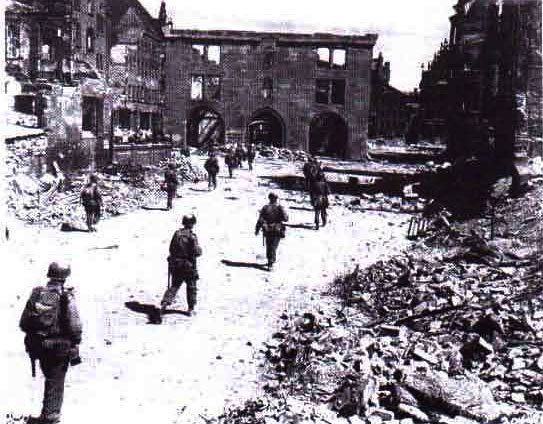
Analysis from: www.45thDivision.org/campaignbattles: The Rhineland Campaign, although costly for the Allies, was ruinous for the Germans who suffered some 300,000 casualties and lost vast amounts of equipment. Hitler, having demanded the defense of the entire German homeland, enabled the Allies to destroy the Wehrmacht in the West between the Siegfried Line and the Rhine River. Then, the Third Reich lay virtually prostrate before Eisenhower’s massed armies.
Eisenhower was gratified with the results of the Rhineland Campaign. They clearly justified his tenacious adherence to a broad-front strategy. In late March he wrote Marshall that his plans, which he had “believed in from the beginning and [had] carried out in the face of some opposition from within and without, [had] matured . . . splendidly.”
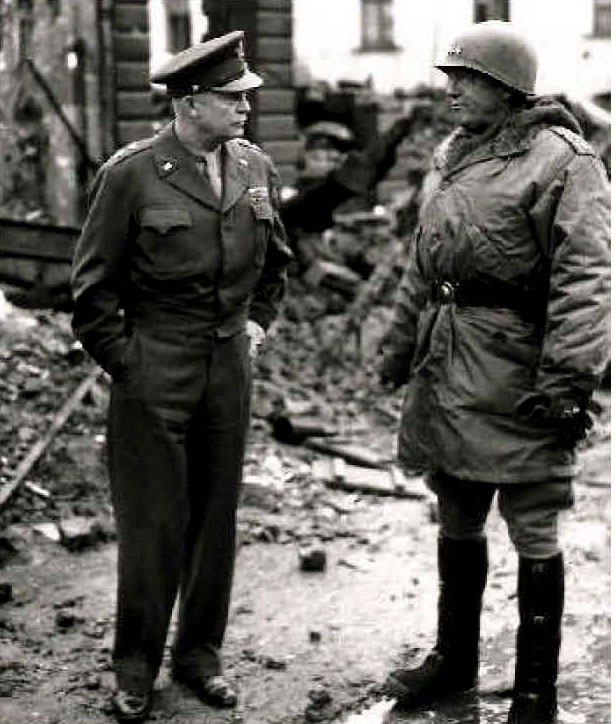
Eisenhower (left) and Patton (right) in Bastogne
Eisenhower chose to press the German defenses continually, straining the enemy from Antwerp to Switzerland, and to increase Allied strength in men and materiel for the inevitable assault into the heart of the Reich. Consequently, he frequently changed the main Allied effort and executed secondary attacks when he saw opportunities across the broad front facing his armies. In many ways the Rhineland Campaign became a protracted, bloody battle of attrition, a battle the Allies had the resources to win. The Rhineland Campaign ended in a triumph that paved the way for final Allied victory.
Eisenhower’s tactful, yet determined, stewardship of a complex and often contentious coalition force made the successful conclusion of a difficult campaign possible. The indomitable soldiers fighting in the Allied cause, transformed high-level plans into victory on the ground. In incredibly harsh weather, over difficult terrain, and against a determined foe, Eisenhower’s soldiers had triumphed. Of all these soldiers, the infantryman had the hardest lot. Eisenhower later wrote that it was his foot soldiers who had demonstrated the “real heroism—which is the uncomplaining acceptance of unendurable conditions.” At Aachen, in the Vosges Mountains, along the length of the Siegfried Line, and on to the Rhine River, the Allied infantryman had persevered and, through his determination, vanquished the Wehrmacht.
Dachau
“We went into Dachau and that was like walking into purgatory to see all those poor people. The German soldiers had departed. There was no fight to get into Dachau, but we didn’t know that. There were certain elements of the German army that were so fanatical that they would often stay and fight no matter what the circumstances. They were like the Japanese Kamikazes, they fought to the last drop of blood they were so hyped up by Hitler.”
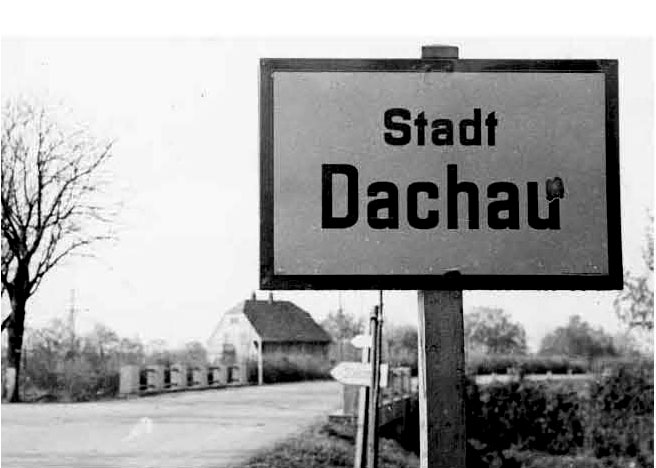
“We knew we were liberating Dachau, we were told what we were doing.
As a matter of fact we were warned not to give the inmates of Dachau any food at all – they could not take it; food had to be administered in a professional way because they had been starved for so long that their stomachs can’t handle it and they’ll cough up the food and they’ll be in pain and they might not survive.”
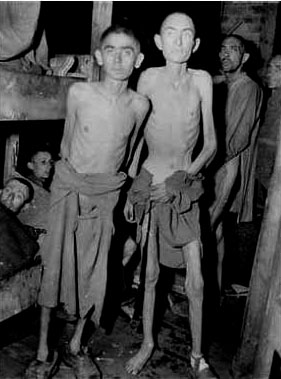
“Right after we captured Munich we were told about Dachau. Before that we didn’t get too much information. The only newspaper we were given was the Stars and Stripes. Now obviously the Stars and Stripes was censored, but we knew that the Jews were being persecuted and other people too. But the American army was using psychology too – they didn’t publish some stories to control the spin and the morale. In the back of our minds it wasn’t so much that we wanted to liberate Dachau, we wanted, to the man, to get this war over with. Not so much the humanitarian aspects, although that came into it when we saw with our eyes and smelled with our noses what went on at Dachau – we were just sick and tired of war.”
“I remember where the guardsmen stood as we walked in to Dachau, with all the barbed wire and stanchions all around. We weren’t the only ones that came into Dachau – it was a very large camp. I think we came in maybe from the southern end and others came in from east, west and north. I saw the gas chambers, the buildings, the piles of clothes, the goods that were being pilfered by the Germans. There were live prisoners still stumbling around and when they finally saw the Americans – they knew the war was over.”
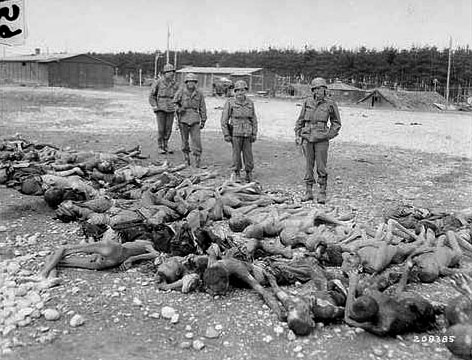
“As soon as we got into Dachau and we immediately knew what we had to do. There were corpses piled like cordwood all over uncovered. The stench was horrible and it was becoming a health hazard. Some of the bodies had been buried, but towards the end the Germans didn’t care any more. The first job that we had to do was to put the bodies in the ground without even trying to identify them, because the plague had set in from the conditions. Instead of doing it ourselves we commandeered the Germans – some were still around. Bulldozers were flown in and we bulldozed some graves and the captured Germans pushed the bodies in. It took a good seven days to get this thing done. The American army did a good job of getting medical people in and supplies to tend to the freed prisoners.”
“Dachau was a big camp, and even the inmates who were in there were afraid to come out because they were afraid of anyone with a uniform. There was no flesh left between the skin and the bones. They were afraid. They had no hair, their skulls were grotesque. The teeth were gone. It wasn’t a pretty sight. There are no words that can describe the horror – you had to see it.”
“Once Dachau was freed the American army had special people to come in and clean up. The soldiers moved on. At the nearby airport, First and Feldberg, a compound was set up to receive the German and Italian prisoners who were coming through the Brenner Pass just to give themselves up. We had to feed them and care from them. So we built these large towers for observation. There were no tents to go around and the prisoners had to sleep without them. We were told if any of these prisoners walked across a line drawn, to shoot them on sight. They got the message and no one tried to escape after the first few times.”
The Holocaust Torah Scrolls Story
“Back to when we got into Germany and were marching through Nurnberg to Munich we were heading northeast. We got to this particular village – it was a typical country village. The center of town had a stockpile of manure for fertilizer. I don’t remember the village name. When you’re in combat you don’t think of these things. Your gut is tied up in knots. If anybody ever tells you they weren’t afraid, they’re full of baloney. I started about my business to quarter the troops. The procedure was that first we picked out a convenient location, in this case a house, for a command post to house the Company Commander, myself, the telephone systems (strung with wires along the ground to the different squads). So I picked out a house that was central to the troops. It was a farmhouse, even though it was central to the village.”
“Usually the Company Commander would pick the defense perimeters, so he would define where the troops deployed for overnight stay. We were always wary of booby traps. The Germans used mines in strategic locations where you would least expect them. They even set mines inside houses as they retreated. They weren’t very powerful mines, but they were explosives designed to hurt and cause chaos. At this point in time the Germans were on the run in retreat. The front was a very broad front and it was a tough job establishing a pincer movement North and South to capture the Germans in retreat.”
“Anyway, in the farmhouse I established the command post where the Commander wanted it. You know we lived in the field, so if we thought we were going to be somewhere for 12 hours at a time, i.e. more of a reserve posture for an interval, letting the other two companies go to the fore, we decided this was a time to let the troops wash up, clean their helmets, take a shave …”
“We liked that to be done indoors so I would make sure we’d get some facilities in peoples’ homes native to the area. The German housewife owner of the house was in her middle 50’s in age. She seemed a good housewife; the home was simple but clean and well kept. Whenever we came into contact with the Germans as local residents I heard from them they had been told that the American soldiers were horrible, tyrants, that they would rape women, kill children, destroy things … any horrible thing you could think of. It was my job to talk them out of that fear.”
“I said in Yiddish to the housefrau: ‘We’re here to get rid of Hitler, that’s our main purpose. We have nothing against the normal German people, just the military.’ This pitch was agreed on beforehand with Company Command.”
“The woman of the house finally relaxed a bit and we were able to get some water, use the wood burning stoves to wash up, shave and to use the facilities of the house. Finally when everyone was settled down, I think she did some cooking for us which was welcomed, since we normally ate a lot of Spam. Spam is horrible stuff, that was chopped up ham, fruit bar, K rations and some C rations (canned goods). We never carried the C rations, too heavy. The C rations weren’t bad and were usually in the company store. The K rations had a hard core of chocolate for energy.”
“When everything quieted down and we were discussing what’s ahead of us, the woman came to me and said in Yiddish ‘If you will come with me, I have something for you, but you’ll have to come with me.’ She led me to the basement which had an entryway door through the kitchen floor.”
“There was a stairway down, and you needed a candle because there was no electricity. I couldn’t comprehend why she came to me for something to give, since the Captain was there with me and he was my superior. She came up – she was not a big bruiser of a lady and she is lugging up these steep stairs with no handrail, a package wrapped in very used, brown wrapping paper.”
“She put the package on the table in the kitchen and she said, ‘This is for you.’ I unwrapped the paper and there were two soiled Torahs. No covers, just the two Torahs. I couldn’t believe that here in the middle of combat, all of a sudden were two Torahs. I wanted to get the story from her, so I sat her down and I asked, ‘Tell me, how you got these?’”
“She told me that her husband had been a cripple for many years; I suspect it had to do with his legs and therefore he was excluded from the German Army. But the Germans had a secondary type of Army he was in; I called it the “looting” army, for cleanup – so when they were in Russia and they took a town and everything was secure, the looting army came in – she called it the Todt labor battalion. They had their instructions about what to do, they had to strip out the town and send everything back to Germany where they had great shortages of almost everything.”
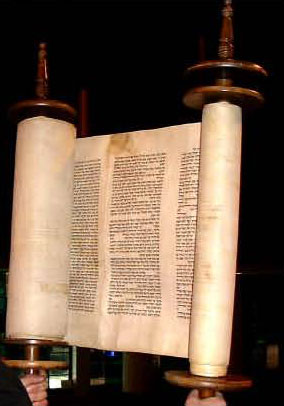
This full Torah scroll was one of the pair presented to Crandall – now in restored condition.
“So the looting army was in one town that she said was Tarnopol, and I don’t remember if I asked her how her husband got the scrolls back to her. His purpose in taking them was that he recognized that the animal skin on which the Torah’s were printed was something that would stand up. They were very short of shoe leather – everyone’s shoes were wearing thin at that point, so it was suggested that the Torah material could be used when her shoes wore out – you could cut out the insoles stacked two or three at a time and use it in the shoes. She told me she had never done it because she was a very devout Catholic as most people were in that section of Germany. Every bedroom had a crucifix above the headboard. She recognized that these were religious documents, but she was not quite sure what they were. She saw that they were in scroll form and as she put it, ‘it looked religious.’”
“She took a chance showing them to me. Of course I asked, ‘Why are you giving them to me?’ She said, ‘Du bist a Judah’ She recognized the fact that my German was not pure German, but rather Yiddish, so she knew I was Jewish. So here I had two scrolls and I’m in the middle of combat. I couldn’t put them on my back, so what could I do?”
The Tarnopol Connection
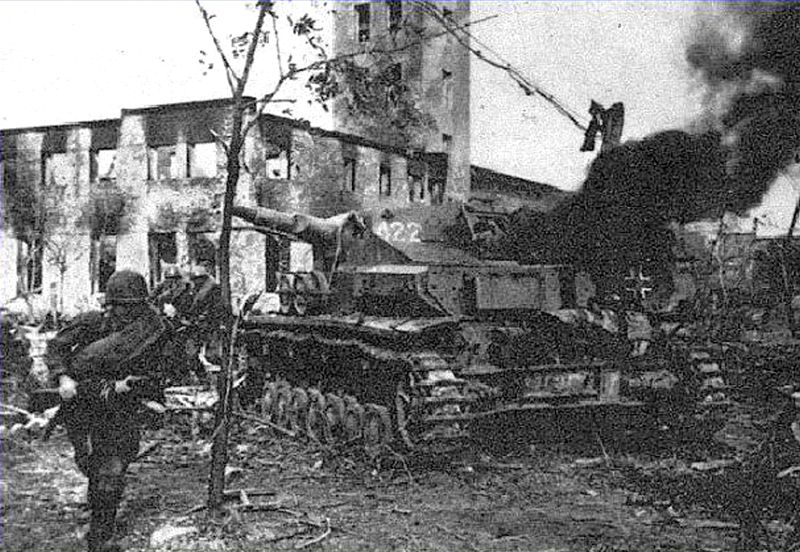
Tarnopol. In 1941: the city being attacked and then occupied by the Germans who exterminated most of the Jews and sent others to the death camps.
Tarnopol had been Polish from 1920, was annexed by the Soviets in 1939, and captured by the Germans in 1941 and not retaken by the Russians until April, 1944.
When the Soviet-German part of World War II broke out, there were about 17,000 Jews in Tarnopol. The Germans overran the city on July 2, 1941. Only a few hundred Jews succeeded in fleeing to the east, following the retreating Russian army. Two days after the Nazis entered, a pogrom began. The Nazis were helped by Ukrainian policemen in taking Jewish men out of their apartments and shooting them in the courtyards of the houses.
The synagogue, Reb Yankel’s Kloise in Staroshkolna Street, was a place of collective murders. The synagogue itself was burned. The number of the Jews killed there was more than 100.
The prison became the place for special torture of Jews. Hundreds of Jewish men were brought there, and ordered to kiss the corpses, bathe them, and drink the bath water. Afterwards they were cruelly killed. The Germans ordered them to bury the piles of corpses in mass graves in the two Jewish cemeteries, or to bury them temporarily in the courtyards. Often those who buried the corpses were then shot.
The Ukrainian policeman and the urban mobs were very active in the pogrom. Usually the Germans shot only men. The Ukrainians also killed women and children, murdering them barbarically with iron clubs, knives, and in other ways. They also destroyed the apartments of the Jews, their places of prayer, and robbed their property. 5,000 Jews were murdered, the majority of them men.
After the pogrom the town was full of corpses. For weeks Jews searched for their lost relatives. People dug up corpses from the mass graves in the places of mass murder.
Later another several thousand Jews were assembled in Sinskey Square. All were ordered to kneel in lines. Whoever moved from his place was shot. The rest of those assembled, some 3,000 – 4,000 people, the majority of them old or with infirm bodies, were loaded on trucks to the railway station, and there they were loaded on railway cars.
This enormous train stopped at the Tarnopol station for two days without giving the Jews, who were tightly sandwiched together, food and water. Afterwards the train went to the Belzec death camp. Many Jews jumped from the windows, but the majority of them died under the wheels of the train or the bullets of the guards.
A few days afterwards another group of Jews were again assembled in the barley mill on Baron Hirsh Street, and a witness has related that there were a heap of children’s corpses in the square near the mill. The Germans and the Ukrainians organized the corpses in a pyramid, and put a living child on it with arms outstretched.
From the mill the Jews were transferred to the railway station through the streets of the city, accompanied by an orchestra. At the railway station the Jews were loaded onto the transport to Belzec. Again many Jews jumped from the wagons. In the last two actions 2,500 were killed.
Three years later, the battle for the re-taking of Tarnopol by the Russians lasted a few weeks in March and April 1944. The control of the city passed from side to side, and both armies fought for every building. The Red Army finally occupied the city on April 15, 1944 after which the remnants of the Jews began to leave their hiding places. The Jewish committee, which was established in Tarnopol between May and July 1944, listed 739 survivors from the city and its surroundings. The majority of them immigrated shortly to Poland. A few hundred of Tarnopol Jews were rescued by the Soviet Union, and they, too, went to Poland. The Soviet authorities permitted the Jewish committee to make a fence around the place of mass murder and the other graves in the fields of Petrikov, and erect a stone monument. During the 1950’s the monument was destroyed by anti-Semites. The two Jewish graveyards were also destroyed completely in time, and the space was flattened. Buildings and garages were erected on the site of the cemeteries. At the end of the 50’s there were about five hundred Jewish inhabitants. The majority of them originally were not from there.
(From Encyclopedia of Jewish Communities in Poland, pp 234- 251 Published by Yad Vashem, Jerusalem.)
Back to the Battlefield:
Nat Crandall: “Well, after the death of Sudbury, I got to know my second Company Commander, Captain Schroeder very well. When you’re in combat in the Army, everyone is your buddy. There’s very little differentiation between people – we all wanted to get out together. It becomes almost like a brotherhood or a basketball team or baseball team. So I went to the Schroeder – he had his own personal Jeep and he had gotten hold of a trailer that the Jeep could pull on a hitch. Whatever he saw he liked, he put in the trailer and took it along. So I went to him and said these scrolls are very valuable to me.”
“I told them what they were – the five Books of Moses – the basis of the Jewish religion and many religions. I said they are very valuable, intrinsically and otherwise, I asked if he would please let me put them in his trailer until we could get somewhere I could ship them home. He said OK and that’s how they made it despite the fighting – for I don’t know how long. Then there was a problem getting materials to wrap them in. I finally got the cook to give me something that he received supplies in. I addressed the scrolls back to my wife and sent them through the US Army Post Office. Truthfully a lot of stuff went home that way, even though there was an order out: No Looting.”
“So I sent the scrolls home but in a couple of weeks they were actually returned to me in the field! The censors would not pass them. They did not understand what they were. They just returned the package to sender. So again I went to the Company Commander and I said, look I told you the story, I said I don’t know anything about the Army war policy, I’m at the bottom of the echelon here, what can I tell them?”
“He said, ‘I think I have a way of getting them back to the States’ He contacted the Regiment … in the Army you had to go through steps. If you wanted to talk to the Regiment you had to talk to the Battalion first. He got through to someone and they told him, OK we’ll handle it – you put your stamp and signature as if these were yours and we’ll see that it gets through and that’s the way the Torahs got to the US.”
“So my wife Ruth kept them, but her parents came to find out what they were all about. Ruth’s mother was a very religious and orthodox lady – to the nth degree. She heard Ruth had these Torahs and that they were probably ripped and soiled, she said: ‘there’s no way you can keep these Torahs, they are desecrated, and you have to bury them.’ Well that didn’t sit well with me, felt I’d been kept alive to save those Torahs and Ruth knew how I felt. Well my sister Sarah approached her rabbi at Bnai Sholom. She came back and wrote to me that the rabbi has made arrangements to place the Torahs with the Jewish Theological Seminary because they have a library of historical documents. The one thing that they need is an affidavit as to how I came about getting them. Well it sounded like a good idea to me. They had a library and it seemed an appropriate place.”
“I couldn’t afford anything else, we were not comfortably housed – we lived in Baldwin Harbor and then we moved to Lido Beach – well I figured this was the best way to go. So the Torah’s went to the Seminary. This was in 1945. I never checked them out for many years because you had to go all the way up in Washington Heights which was near Columbia University, and maybe it worked out for the best because of what happened 50 years later.”
Exit the Military
“After the Germans surrendered, the Company Commander came to me and said he wanted to step me up in position. It had advantages in stature. I said, well it had some disadvantages too. There was still a war going on in Japan, I said I didn’t want to go to Japan. He said, don’t worry about that. If you’ve been in two theaters of operation (and I had) then you cannot be sent to Japan. ‘What I recommend for you is to become a supply officer for a particular regiment.’ I said thanks but no thanks. I have lots of points and I want to use them to get out. I had two purple hearts, I’d been in two theaters of combat, I had a bronze star, a wife and a child and I want out.”
“He said, OK, and that’s how I got out.”
Restoration of the Holocaust Torah Scrolls
For years the Crandall kids occasionally heard snippets of a story from their Dad that he’d come upon two Torah scrolls while marching across Germany during his stint in WW II. Nat never talked about the War until quite late in life. Nothing further materialized from the scant hints of the existence of these scrolls until sometime in 1992 the idea was thrown around that it would be amazing if even after 50 years, if the scrolls were still at the Jewish Seminary and could be retrieved, perhaps they could be restored and used in Nat’s grandson Brett’s bar mitzvah. There were lots of doubts about the story, and even if it were true, what were the odds that the scrolls still existed?
Nat actually found the paper signed by the Seminary evidencing their being left there – and proving ownership! That was stunning. So at age 82 Nat trekked to NY, rummaged around the Jewish Seminary – at first being disappointed at the news that there had been a partially destructive fire there in the 1950’s. However, they did find the two scrolls – a full Torah scroll and an unusual smaller and rare Haftorah scroll just as Nat had described. He identified them by the unusual ivory and wood carved spindle on the Haftorah scroll.
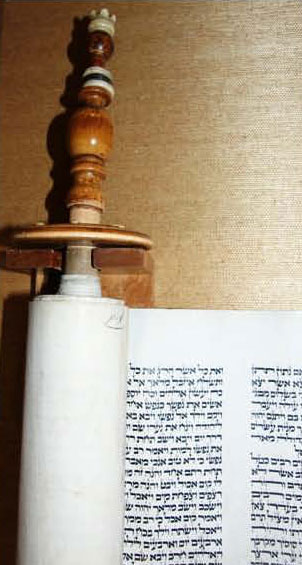
Holocaust Haftorah scroll with unusual carved ivory spindle crown and rings.
Based on that, and the letter he produced, the Jewish Seminary released the scrolls to him. Upon inspection, it was damaged, but only lightly – some letters had literally fallen off the page as though they were stick-ons (they weren’t, it was later learned that heat can make that happen to heavy ink on animal skin). One of the two fancy carved spindles was missing but it the overall scroll was largely intact.
Upon inspection, the calligraphy-style writing was judged to be unusual – a fancier-than-normal and older style than would even be expected for mid-20th century. Restoration was to be a challenge.
One day Nat’s son Rick told the story of the scrolls to an associate who was an orthodox Jew living in Australia. He indicated that his Rabbi (from his orthodox Temple in Sydney), was relocating to Israel where he’d been appointed to a Judge-ship. This Rabbi happened to be a scribe – meaning he was trained to write a Torah – and that coincidentally was stopping for a week in the U.S.
Rick contacted the Rabbi/scribe, Rabbi M. Sevy, and gave him a summary of the story over the phone and he insisted the scroll be brought to him. Upon seeing the scroll and studying it, he asserted that he’d heard of such a ‘haftorah’ scroll but he had never seen one. The Australian Rabbi offered to stay in the U.S. for an extra two weeks, and defer his relocation to Israel, in order to restore the writing himself. The whole thing was much too coincidental, and so in his most humble manner, Rick asked the Rabbi: “with the greatest respect, Rabbi, please do not be offended if I ask you to show me some of your lettering …” and then there was silence. The Rabbi smiled and said he would expect nothing else of a careful person. He went to his luggage, removed a rolled up sleeve of calligraphy pens and an ink bottle, chose one and said “do you see that phrase (pointing to a section of the scroll)?”
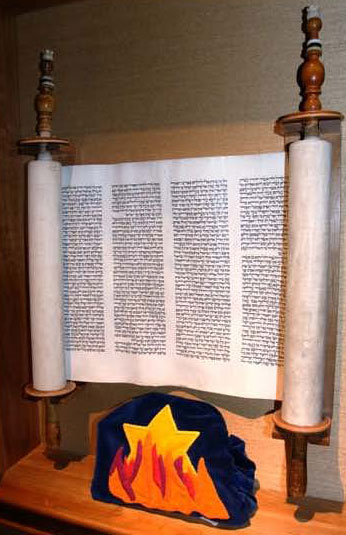
He then produced lettering on a scrap of paper, almost without referring to the scroll, which was identical in style to the ancient lettering, and beautiful to see. There was no further hesitation.
Rick and the Rabbi talked for a while about his father’s story. When he got to the part about Nat believing the scrolls had saved his life, the Rabbi exclaimed: “Of course! There can be no question about it!” The Rabbi then told a story that occurred during the Israeli Six Day War (he was in Israel then); the Sabbath fell in the middle of it. A Rabbi felt strongly that the troops should have a service. He took a Torah from its ark, and this little man marched with it out onto the battlefield towards the troops. An enemy shell exploded near him and apparently several saw him literally blown into the air from the percussion. He was described as gripping fiercely to the Torah, and fell to earth completely unharmed and proceeded on his way!
When all was finished it was only three months before Brett’s Bar Mitzvah – which gave him time to practice with the scroll. On September 29, 1995 Brett put the restored scroll back into active service at Temple Beth Emeth in Ann Arbor, Michigan after 52 years of obscurity. As is customary for a Bar Mitzvah 13-year old, Brett delivered his speech, but this one was especially powerful and moving – there was not a dry eye in the congregation when he finished.
Here are his speech notes:
BRETT CRANDALL’s BAR MITZVAH SPEECH NOTES Age 13, Sept. 29, 1995
THIS HOLIDAY PERIOD IS ALL ABOUT ENTERING A NEW YEAR, COMMITTING TO RETURN TO TRADITIONAL JEWISH VALUES
SO MY HAFTORAH PORTION IS ABOUT A RETURN TO JEWISH BELIEFS
THE ACTUAL STORY: RETURN TO WORSHIPING 1 GOD
DESTROYING CLAY IDOLS
THERE IS ANOTHER RETURN HAPPENING TODAY
I READ FROM A HAFTORAH SCROLL THAT IS BEING RETURNED TO ACTIVE USE FOR THE FIRST TIME IN 52 YEARS AFTER BEING NEARLY DESTROYED IN THE HOLOCAUST
SPECIAL SCROLL IN MY FAMILY, SPECIAL STORY
MY GRANDFATHER NAT CRANDALL WAS A SOLDIER IN WW II, MARCHING ACROSS GERMANY IN COMBAT
HIS COMPANY STAYED OVERNIGHT IN A FARMHOUSE AND THE WOMAN OF THE HOUSE WHO SPOKE ONLY GERMAN, FIGURED HE WAS JEWISH FROM HIS ABILITY TO SPEAK TO HER IN YIDDISH.
SHE BROUGHT OUT TWO SCROLLS SHE HAD BEEN HIDING IN HER BASEMENT. HER HUSBAND, A GERMAN SOLDIER, SENT THEM TO HER FROM A TEMPLE THEY DESTROYED IN TARNAPOL, POLAND.
HE TOLD HER IN A LETTER TO USE THE PARCHMENT OF THE SCROLL FOR SHOE LEATHER.
SHE COULDN’T DO IT EVEN THOUGH SHE WASN’T JEWISH.
SO SHE WAS RELIEVED TO GIVE THEM TO MY GRANDPA
FOR SHE WAS WORRIED ABOUT BEING CAUGHT WITH THEM.
HE CARRIED THEM ACROSS THE BATTLEFIELD WRAPPED IN A SIMPLE CLOTH, UNTIL HE COULD SHIP THEM BACK TO THE U.S.
HE IS CONVINCED TO THIS DAY THAT THEY PROTECTED HIM FROM DEATH DURING BATTLE.
HE PUT THEM IN THE NY JEWISH SEMINARY IN 1945 FOR SAFE KEEPING,
BUT HE RECENTLY GOT THEM BACK SO WE COULD RESTORE THEM. THE SCROLLS ARE ALL THAT IS LEFT OF A WHOLE TEMPLE THAT HITLER DESTROYED.
BUT NOW WITH THIS READING THE SCROLL IS RETURNED TO USE…
WE’RE KEEPING IT HERE AT TEMPLE BETH EMETH SO OTHER BAR MITZVAH CAN USE IT.
WE LEARN FROM THIS THAT HITLER MAY HAVE DESTROYED OUR BUILDINGS
BUT HE COULD NOT DESTROY THE WORD OF GOD.
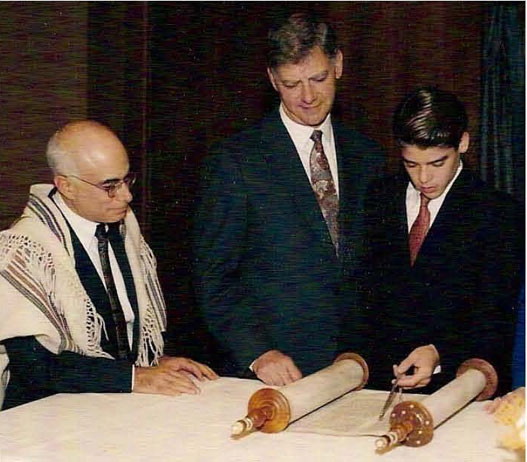
Rabbi Levy; Rick Crandall witnessing Brett Crandall reading from holocaust Haftorah scroll during Bar Mitzvah
